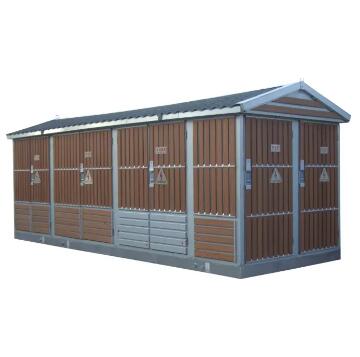Weathering the Elements: Environmental Considerations in Cabinet Type Substations
2024-01-09
Introduction:
As power distribution systems evolve to meet the demands of modern urban landscapes, Cabinet Type Substations stand as resilient sentinels, adept at navigating environmental challenges. This blog post explores how Cabinet Type Substations address environmental considerations, from protecting against diverse weather conditions to managing temperature variations, ensuring sustained reliability in the face of nature's elements.
Weatherproof Construction:
1. Purpose:
The external enclosure of Cabinet Type Substations is crafted with weatherproof materials to shield the internal components from the impact of varying weather conditions.
2. Advantages:
- Durability: Weatherproof construction enhances the durability of the substation, safeguarding it against corrosion, rust, and other forms of degradation.
- Reliability: Protection against weather elements ensures that the internal equipment operates reliably, minimizing the risk of malfunctions caused by exposure to harsh conditions.
Temperature Control Mechanisms:
1. Purpose:
Cabinet Type Substations incorporate temperature control mechanisms to regulate the internal climate, preventing overheating and maintaining optimal operating conditions.
2. Advantages:
- Transformer Longevity: Controlled temperatures contribute to the longevity of transformers, preventing thermal stress and extending their operational life.
- Operational Efficiency: Consistent temperatures ensure that all components function efficiently, reducing the risk of performance degradation due to extreme heat.
Ventilation Systems:
1. Purpose:
Ventilation systems within Cabinet Type Substations facilitate the exchange of air, preventing the buildup of heat and maintaining a conducive environment for electrical components.
2. Advantages:
- Heat Dissipation: Effective ventilation dissipates heat generated during the operation of transformers and other equipment, preventing overheating.
- Enhanced Cooling: Ventilation systems complement cooling mechanisms, ensuring a balanced approach to temperature control.
Sealed Enclosures:
1. Purpose:
Cabinet Type Substations often feature sealed enclosures, providing an additional layer of protection against dust, moisture, and other environmental contaminants.
2. Advantages:
- Internal Cleanliness: Sealed enclosures prevent the ingress of dust and debris, maintaining a clean internal environment for sensitive electrical components.
- Prevention of Corrosion: By limiting exposure to moisture, sealed enclosures reduce the risk of corrosion, preserving the integrity of the substation.
Outdoor Installation Capabilities:
1. Purpose:
Cabinet Type Substations are designed for both indoor and outdoor installations, allowing flexibility in deployment based on the specific environmental requirements of the location.
2. Advantages:
- Adaptability: Outdoor installation capabilities enable the substation to be placed in various environments, providing a versatile solution for different urban landscapes.
- Space Optimization: In outdoor settings, the compact design of Cabinet Type Substations allows for optimal space utilization while still addressing environmental considerations.
Corrosion-Resistant Materials:
1. Purpose:
The use of corrosion-resistant materials in critical components protects against the corrosive effects of environmental elements, particularly in coastal or industrial areas.
2. Advantages:
- Extended Lifespan: Corrosion-resistant materials enhance the lifespan of the substation, reducing the need for frequent maintenance and replacement.
- Reliable Performance: Components resistant to corrosion ensure that the substation continues to perform reliably, even in challenging environmental conditions.
Conclusion:
Cabinet Type Substations exemplify adaptability in the face of diverse environmental challenges. Through weatherproof construction, temperature control mechanisms, sealed enclosures, and other innovative features, these substations not only weather the elements but also thrive in the dynamic landscapes of modern urban environments. As guardians of power distribution, Cabinet Type Substations demonstrate that reliability and resilience are key pillars in the journey towards sustainable and robust electrical infrastructure.


